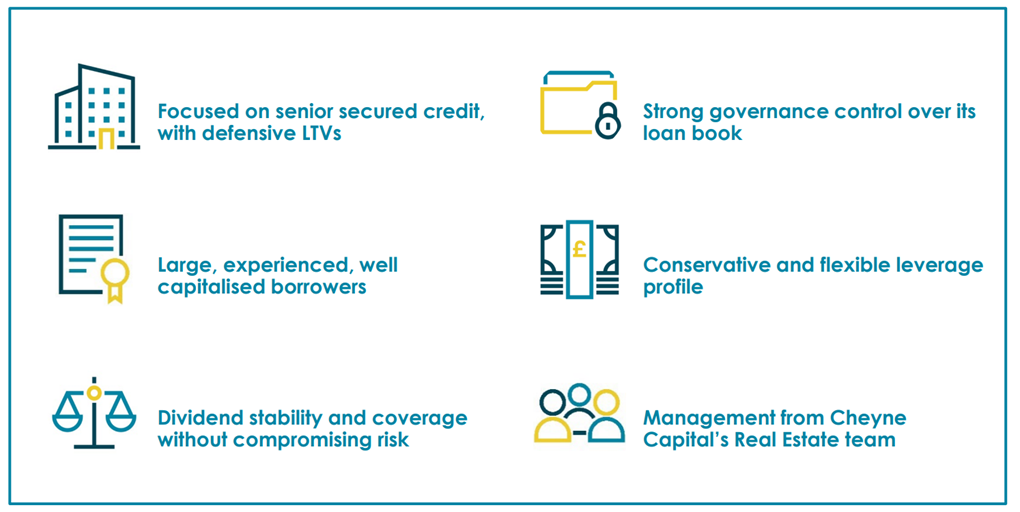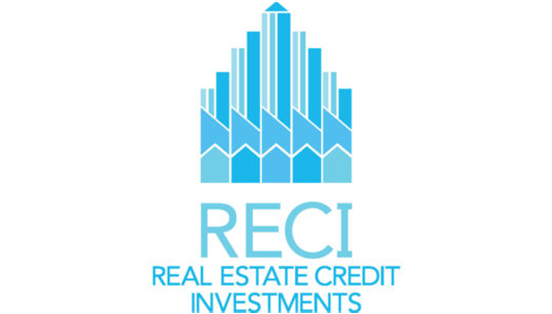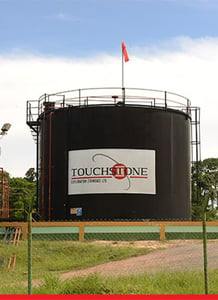Real Estate dividend stock, Real Estate Credit Investments Ltd (LON:RECI) published on 30 January 2023 its Investment Manager, Cheyne Capital’s Q3 Investor Presentation. It provide investors with an update on the position of the Company as at 31 December 2022.
Daniel Turgel, on behalf of DirectorsTalk, caught up with Ravi Stickney, Managing Partner and CIO, Cheyne Capital Real Estate to discuss the 3rd quarter highlights, how RECI is positioned in the current high interest rate environment and the company’s financials and strategy.
Q1: Ravi, can you remind readers of the key overarching aims of RECI
RECI is a closed-ended company. Its overarching aim is to produce a stable dividend yield for investors and NAV preservation through investment in real estate credit in a European context. To that end, it invests currently in self-originated deals i.e. loans, predominantly senior loans and it also invests, to a lesser extent, in public market real estate type bonds i.e. CMBS as well.
RECI is managed by the real estate business Cheyne Capital. Today this business manages about £5.5 billion of net investor money, all of it invested in real estate credit across Europe. The team that manages your capital is roughly 40 people now spread across localised offices here in London, Paris, Berlin as well as in Madrid.

Q2. What were some of the key updates during the 3rd quarter?
To start with on page 4 is the completion of a new deal, a very attractive senior loan, a fairly sizable one, at £45 million. That senior loan is capitalised or collateralised by a student housing, a PBSA project in Central London.
There are no defaults in the portfolio to date, we have always stated that we intend this portfolio to migrate to its senior lending, we’ll come on to the trend there. At the present time, mezzanine lending comprises roughly 11% of the book.
We’ve had some healthy repayments coming through in the book and during the quarter, we’ve had three deals repaid, included in that repayment was the largest loan in the book which was a mixed-use retail and residential complex in prime Central Paris. Also in those repayments are two mezzanine loans collateralised by hotel assets in France as well.
Cash balance remains healthy, it has always the intent of the company to retain between 5-10% of its NAV in cash and indeed, it retained roughly £33 million in cash at the end of January.
The dividend, it is the target of the company to pay a stable dividend at 3p a quarter and that equates roughly to a 9% yield based on the closing share price at the end of December. We’ll come on to the coverage of that dividend later on.
Financing of funding the book, the right hand side of the balance sheet, we’ve made substantial progress towards what we said we would do which is to provide for a mixed of flexible short dated funding, alongside term matched structured financings.
Finally, it goes without saying and confirms what I put forward last quarter, we did expect in the last quarter the opportunity set particularly in senior lending to accelerate significantly as we came in to Q1 this year, and indeed that is exactly what’s happening. Just to provide a context, the real estate business at Cheyne is currently sitting on about $5 billion worth of pipeline opportunities, all of which are in senior loans with highly accretive returns, with assets across Europe and in the UK.
Q3. Tell us more about the focus on senior loans in the portfolio.
Page 5 highlights the strong focus on senior credits. Their top ten positions are all 100% senior loans right now and the new originations are 100% senior loans, also as a floating rate nature.
The Weighted Average LTV has migrated downwards to roughly 56.3% now, as at the end of last year. The sponsorship of the underlying loans is predominantly the larger better capitalised sponsors i.e. the large private equity firms, global private equity firms, the largest families, developers and operators across the UK and Europe as well.
Shopping centres represents less than 2% GAV of the book right now, secondary offices does not represent at all in the book and logistics – a class we have been concerned about for some time – represents around 3% of GAV, albeit that is a new deal representing new valuations in that sector.
Crucial to understand as well is that RECI always retains absolute governance, covenants, and control over its deals i.e. it does not participate in widely syndicated loans or loans where it has diluted controls, covenants, or governance.
In addition, we have always targeted a granular book and there are roughly 60 positions in the book today, and net leverage is transparent in how that leverage is comprised and has roughly 25% today versus a limit of 40%.
Q4. Let’s turn to the state of the markets. What’s your view and how is RECI positioned?
The state of the markets today are fast evolving. In the last quarter, I highlighted the fact that we expected the evolution of higher rates, higher yields as well as a weakening debt market, also a recessionary environment would result in substantially lower valuations across the piece for most asset classes albeit funding affected more than others.
On page 7, we highlighted the key areas of retail as well logistics as being perhaps the most exposed for different reasons, and we highlighted the more resilient asset classes that being the living sectors i.e. PRS, multifamily, single family homes, industrial, as opposed to logistics, as well as prime offices with the best ESG credentials being the more insulted asset classes.
We also looked at the fact that valuation declines, coupled with the need for recapitalisations against those valuation declines, also in conjunction with the fact that senior lenders and also potentially CMBS holders unwilling to extend that debt may cause the acceleration of the need to refinance or seek out new forms of financing in the market.
As an update, what we’re seeing today, already in the two months of this year, is that thesis has not only proven to be absolutely correct but it’s also accelerated to a degree far in excess of what we’d anticipated. This has resulted, as I said, in a live pipeline of around £5 billion, a lot of it arising from sponsors who are sitting on phenomenally strong assets, but simply needing to recapitalise their portfolios, in the light of valuation declines but also in the light of incumbent lenders or indeed incumbent CMDS structures unwilling to extend their present debt capitalisations.
On that last point, we’re beginning to see the emergence of CMBS deals that are not being extended by the services or by the bond holders themselves and it’s a phenomenon that we expect to accelerate during the course of 2023 and 2024, with a number of these CMBS deals needing recapitalisation or refinancing as well.
Q5. Can you take us through some statistics of the portfolio at this quarter end?
The key distinction to point out is the mezzanine book is now at 11%. To put that in context, Q4 last year coming in to the financial end, that was 23% so they’ve seen meaningful decline during that time. Particularly the repayments of the mezzanine hotel deals has contributed to that substantial decline in the mezzanine loan group. All of the new originated is senior so you’d expect that percentage to decrease further.
On page 9, you will see a wagon wheel that provides for a very granular underlying asset mix in the company’s loan book.
One thing to point out is the largest allocation in terms of risk to the living sectors that comprise core living residential, build to rent, PRS, student accommodation , healthcare, housebuilders, assisted living, later living, the sum total of those sectors represent roughly 42% of the current book.
That is then followed by the leisure sector i.e. hotels which at this point time presents a very attractive environment for senior lending into hotels at 18%.
This is followed by high quality offices at 14% behind that.
Q6. Thanks Ravi, can you highlight a couple of items on the brief financials page?
Yes, on the balance sheet right now, shown on page 11, you can see a bilateral loan book that dominates at £330 million, a bond book at roughly at £90 million and cash on the balance sheet of £24 million.
The financing, that comprises all of the structured financing as well as balance sheet financing, of £119 million, giving net assets of roughly £339 million with NAV per share of around £1.48 and net leverage of 24.7%.
Q7. What is the yield on the current book?
The current book roughly yields 9.5% on a unlevered basis, and that is fairly consistent between the senior lending as it is with the bond book as well, today.
Just to pause there, the senior lending book, what we have seen in terms of yield migration has been beneficial to the company. As we sit here now, senior loans plus lending sit at around 7.5% or more, and all in yields on senior development loans sit at around the low-teens level. On a blended basis, that’s migrating to a 10% blend overall i.e. higher than where the current book sits.
On page 13, the bilateral deals book sits at a weighted average LTV of 59% but yielding at 9.6% today, and a weight average life of 2.1 years, which is just consistent to how this portfolio has been constructed through time.
On page 14, on the bond book, fairly similar statistics. 51% weighted average LTV, albeit this will be all core loans, weighted average unlevered yield at 9.4% with weighted average life of 2 years.
Also, to point out in the penultimate bullet point there is that the bond book is held at a current market of about 90.6% of par hence we would expect that the transition to par, over the course of time, that discount will be recovered in the P&L of the company.
Q8. Are there any concerns or changes to the top ten positions which dominate the book set out on page 15?
The first thing to mention is there are no current issues or concerns on the top ten here although there have been some changes.
The largest loan that dominated here, the mixed use asset in Paris, has now come off the book, with a full repayment supplanting now it with a UK mixed use portfolio which is predominantly office, residential, and also industrial as part of that portfolio mix. This represents an LTV of roughly 58% and a commitment of £83 million. The company is a senior loan that displays a core plus profile in terms of its risk and has a high IRR attached to it.
The second position is a new entrant, as I highlighted before, a student accommodation project, very well situated in London. That represents a commitment of £45 million for the company and an entry LTV of 55% earning a higher single digit IRR.
The other assets have been there in the last quarter and are consistent with the narrative I gave you in the last quarter.
Pages 16 and 17 go through in a bit more detail some of the key assets which I shall not expand on right now other than to point out that the picture on page 16, on the far left represent the new student housing project – the new senior loan we have just made.
Q9. Has there been much change in the sector mix from last quarter?
There’s not much change from the prior quarter in the sectoral analysis, other than to point out that in the hotel exposure on page 20, with the exit of two of our French hotel deals, the portfolio now is dominated by the mezzanine loan on the London hotel portfolio, four assets in Central London.
As with the prior quarter, the trading update on these hotels is extremely strong in terms of occupancy and now even ADR now begins to exceed 2019 levels. This portfolio has benefited from a very strong and favourable restructuring by the sponsor and the tenant, and we expect that this position will be exited towards the end of the year successfully.
The second position is perhaps the largest leisure and spa operator in the UK, a fairly lowly geared core senior loan earning accretive return and the third asset has been with us for quite some time, a very high profile super prime hotel portfolio in France. Just to make the point that the latest trading number from that portfolio is ADR is now significantly ahead of where they were in 2019.
The office mixed use sectors have seen no change during the quarter. The student housing sector has, of course, seen a new entrant, apologies we need to update this book on page 23 for the new entrant which is the London senior loan, comprising roughly £45 million of commitment at a 55% LTV.
Q10. Can you take us through the funding profile on page 28 of the presentation?
Here, we set out the balance sheet leverage for the company which amounts to £108 million and net of cash that sits at £84 million net effective leverage, that represents 215% of NAV and, the cost of finance is 4.3%. The reason it’s gone up is predominantly because the base rates have gone up, indeed the spread of the base has not crept up that much, it’s more the fact the base rates have gone up on cost of financing.
Now, 26 positions would benefit from balance sheet financing, we have of course moved the balance sheet financing to be of a longer term nature. On the right hand side of that page, you will see expose on the asset level structured financing, this is financing that would either have no-recourse to the company at all or limited-recourse.
At present, there are only two positions that are financed through the structured finance funding route, comprising roughly £8.4 million of financing. That financing has no-recourse for the company and hence the contingent liabilities currently are zero.
Asset as a principal, as I mentioned before, we do intend to a) provide for a mixed of financing but b) to ensure the financing moves to a long term profile in terms of its tenure.
Q11. How are things progressing in relation to the reconciliation of the earnings and dividends?
One of the intentions we’ve spoken about before is to move the company to a position such that its dividends are covered entirely just by income to rely on profits, on quarterly or monthly profits. Indeed, that’s where we’re getting to, at present dividends are almost entirely covered by income to a 0.96x coverage ratio.
So, we’re nearly there in having the company fully covered on its dividends from its income alone.
In summary, I think the biggest change has been the macro environment and the pipeline that RECI is looking at, and also the biggest change has been some of the exits from the book that have been beneficial to the company.
Real Estate Credit Investments Limited (LSE: RECI) is a real estate income and capital growth investing opportunity.










































